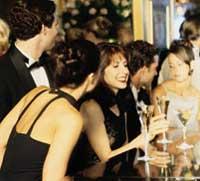Hey, my glass of champagne has pixars!
In addition to the flavor, the tasters take into account color, smell, density... to determine if the juice is good, medium or bad. In the case of champagne, bubbles are also taken into account. Professional champagne tasters observe with magnifier the foam that forms on the surface of the liquid. The foam disappears immediately after pouring the champagne and is replaced by bubbles that are constantly formed and rise in the glass.

In the Chanpaigne Wine Commission (France) they have not been able to maintain curiosity and have clarified the details of the foam. The greater or lesser duration of the bubbles seems to depend on the amount of waste in the liquid. The more waste, the more bubbles are generated and the longer it will last. The truth is that the residues form a layer on the surface of the liquid, that the surface tension increases and that the bubbles become stronger and stable. With this study, it has been possible to verify what was thought.
Now you will think that you drink champagne full of residues, but quiet, the residues are only proteins and remains of sugar and are generated in the champagne production process itself.
But it is not the only interest of the Chanpaigne Wine Commission. They indicate that they have managed to control the process. For the tasters, they can prepare the perfect champagne. From the commercial point of view little will change, since depending on the cleaning of the glass the bubbles vary.
Buletina
Bidali zure helbide elektronikoa eta jaso asteroko buletina zure sarrera-ontzian











